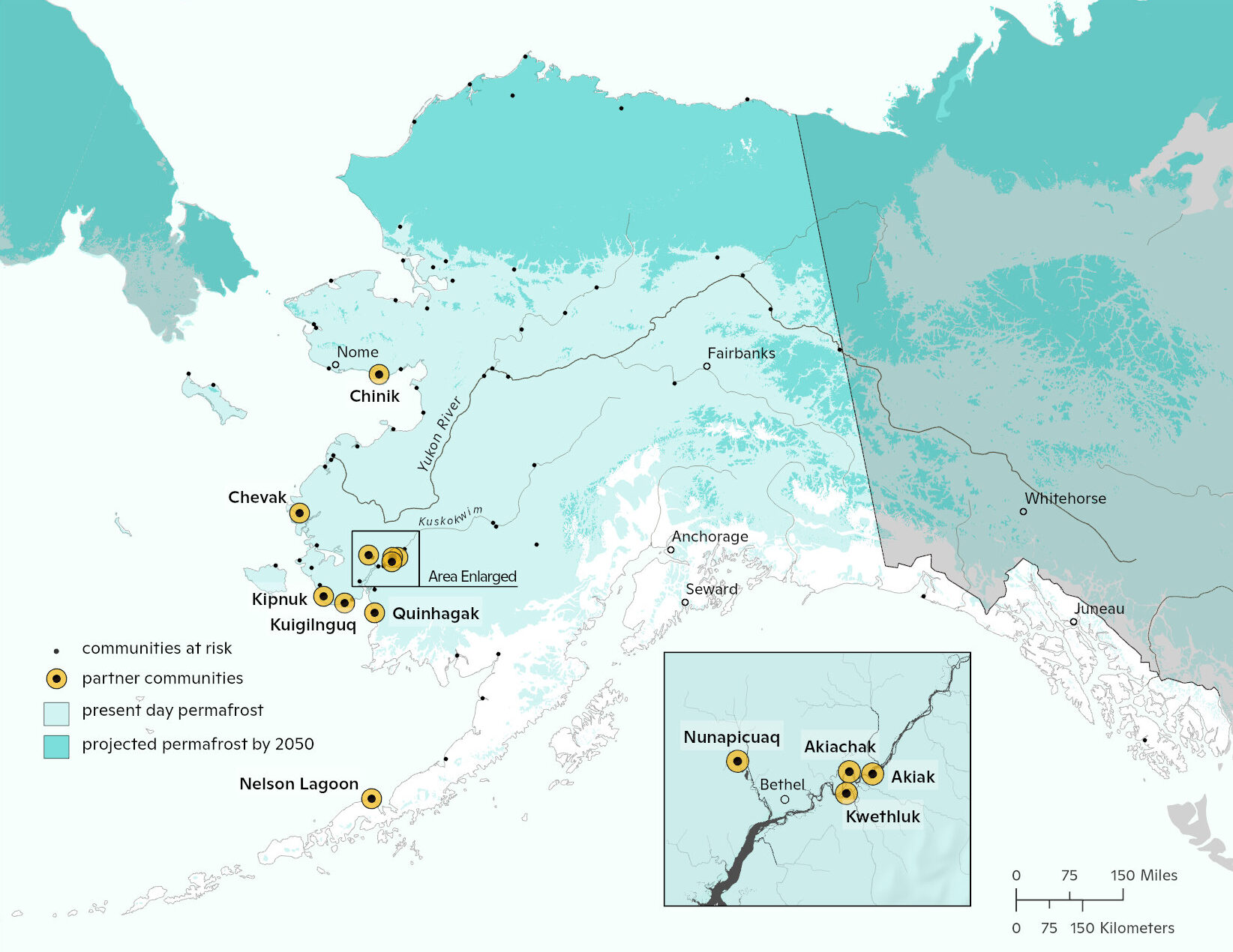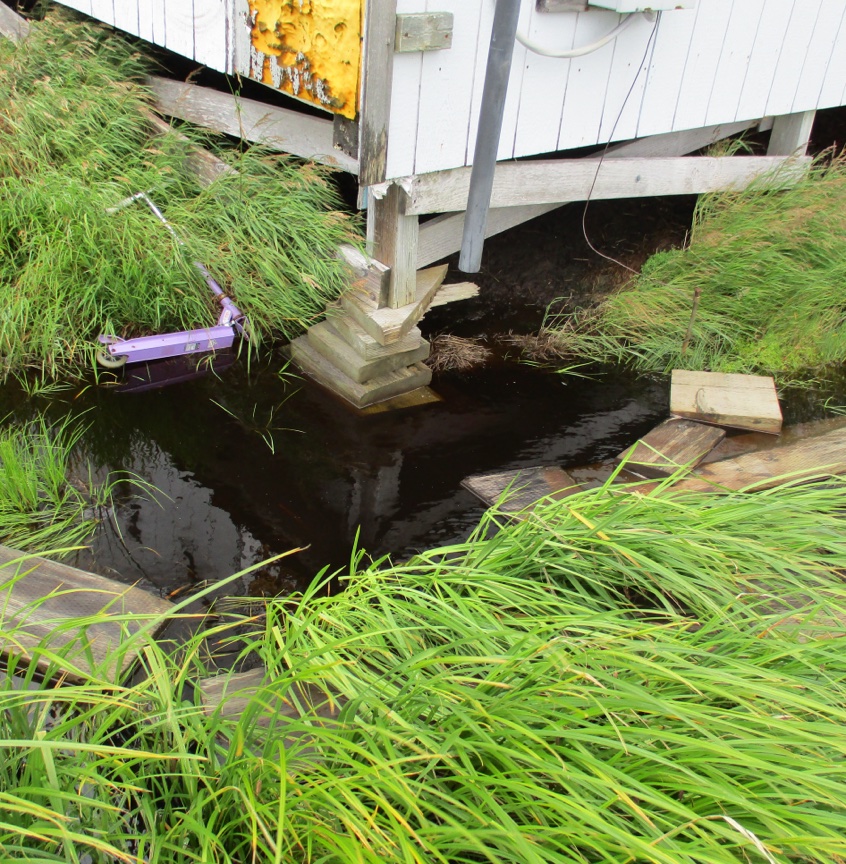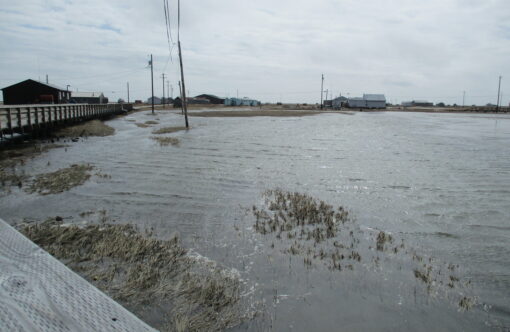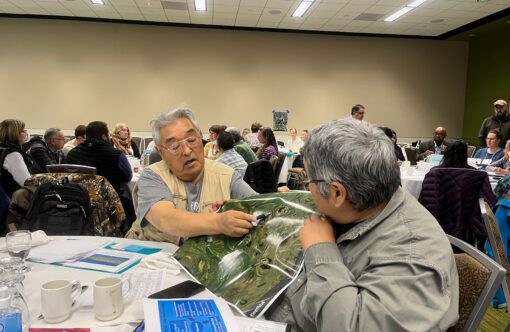Permafrost thaw is putting Arctic communities at risk. We need just solutions.
Right now, communities in the Arctic are being forced to make extremely difficult decisions about where and how they can live in order to protect themselves from climate-induced hazards caused by permafrost thaw.
Working closely with leading climate scientists, Indigenous knowledge holders and Alaska Native tribes who live on land underlain by permafrost, we are applying our monitoring and modeling tools to assess the current and future impacts of permafrost thaw and co-create equitable adaptation plans that respect and protect the health, well-being, and human rights of Arctic residents.

Black dots show communities across Alaska that are under the greatest threat from the impacts of erosion, flooding, or permafrost thaw. Denali Commission Report (2019). Yellow dots show communities at risk that are now Tribal partners of Permafrost Pathways. Projected permafrost under future scenario RCP 8.5. Map by Greg Fiske / Woodwell Climate Research Center
Designing and implementing an environmental monitoring toolkit for adaptation planning.
Community-led environmental monitoring of permafrost thaw is essential for adaptation planning and long-term climate resilience. Our team is working with imminently threatened Alaska Native communities to collect essential data on thaw risk in order to guide adaptation decision making, which can include actions for communities to protect themselves in their current location or, when necessary, relocate.
Projecting changes in the landscape at scales needed for adaptation decision making.
Community planning in response to climate change requires information at the right scale of detail. While the majority of current models represent the land using spatial grid cells that are 50 to 200 kilometers long, planners need data at the spatial scale of a house, road, or piece of infrastructure. Similarly, a time frame of 10 years or less is necessary for imminent planning, but most projections focus on mid- to end-century timelines and beyond. To address this need, we are developing a landscape change model that incorporates community-collected data on land cover changes and erosion to project permafrost thaw, ground collapse, habitat and landscape changes, sea level rise, and flooding at spatial resolutions relevant for adaptation planning.


Implementing an Indigenous-led relocation governance framework.
Working closely with Alaska Native tribes, we are co-designing Indigenous-led adaptation frameworks and supporting the creation of relocation governance frameworks that protect the human rights of climate-threatened communities, ensure the right to self-determination, and foster long-term community and climate resilience. We will identify the elements of a successful relocation approach, including the community relocation decision-making process, the process for identifying and choosing relocation sites, government resources that can facilitate climate resilience, and the policy-level barriers that prevent communities from accessing them.
144
Communities in Alaska face imminent threats from permafrost thaw, flooding, and/or erosion
$5.5 Billion
Worth of Alaskan infrastructure is expected to be damaged as a result of climate change this century
0
Nations currently have climate-relocation governance frameworks



